Plants have always been associated with romance—whether it’s giving your loved one a rose as a special gift or entrusting them with a plant, romance, and plants always find a way.
Are you looking to add a little more love, romantic atmosphere, and visual appeal to the interior of your home or garden space?
You’ll be happy to learn that there is a wide selection of beautiful plants that have variegated leaves with heart shapes and a stunning variety of colors.
All of the popular plants listed below are incredibly stunning, adorable houseplants, and most of them are relatively easy-care houseplants.
- Related article: Complete List of House Plants
Take a look at some of the lovely plants with heart-shaped leaves that we have on our list of plants below—take proper care of these plants, and they will show your love to everyone!
1. Heartleaf Philodendron (Philodendron Scandens)
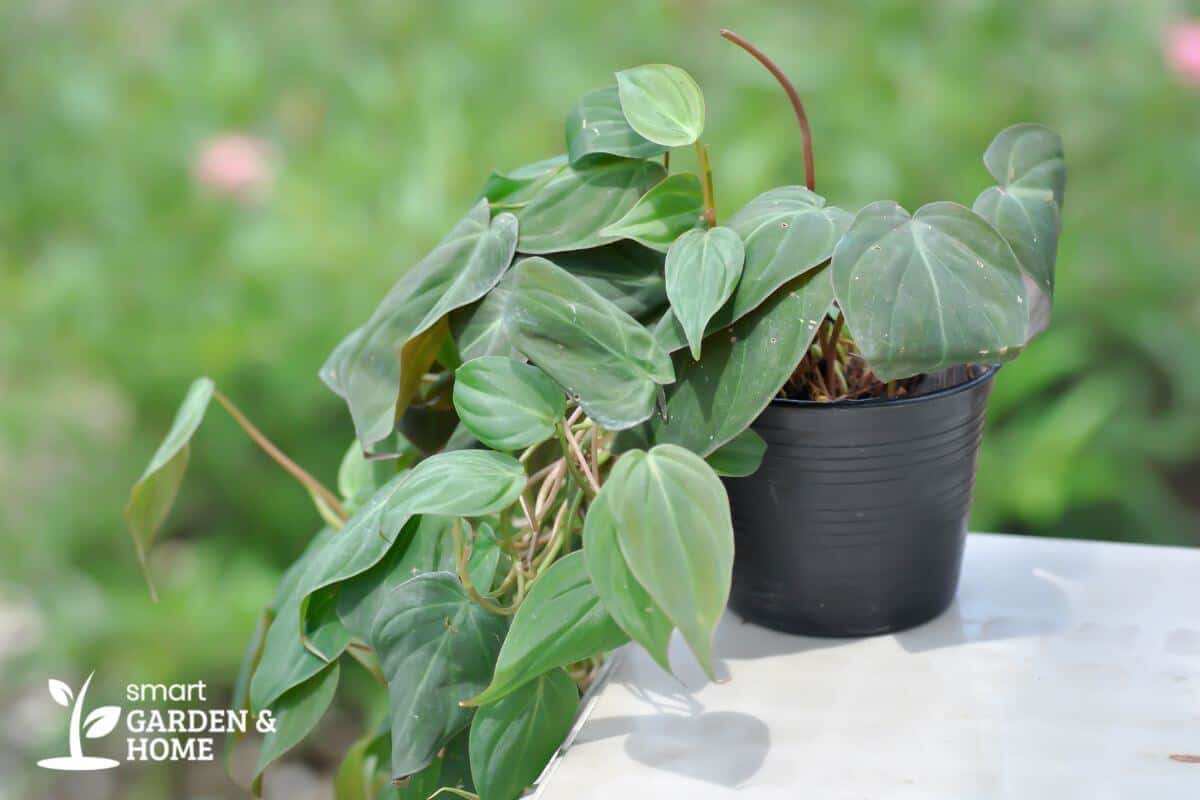
One of the most intimate plants with heart-shaped leaves is the Heartleaf philodendron plant. Additionally, this plant is simply one of the easiest plants for beginners to grow.
It doesn’t just show off with its green-vining, heart-shaped leaves, but it’s rather forgiving and can withstand neglect for a period of time.
This perennial plant retains its green leaves year-round and occasionally produces small, white flowers.
This plant is indigenous to the West Indies and is sensitive to low temperatures, requiring warm conditions when kept indoors.
Learn more in this overview care guide for philodendron plants.
2. Pothos (Epipremnum Aureum)
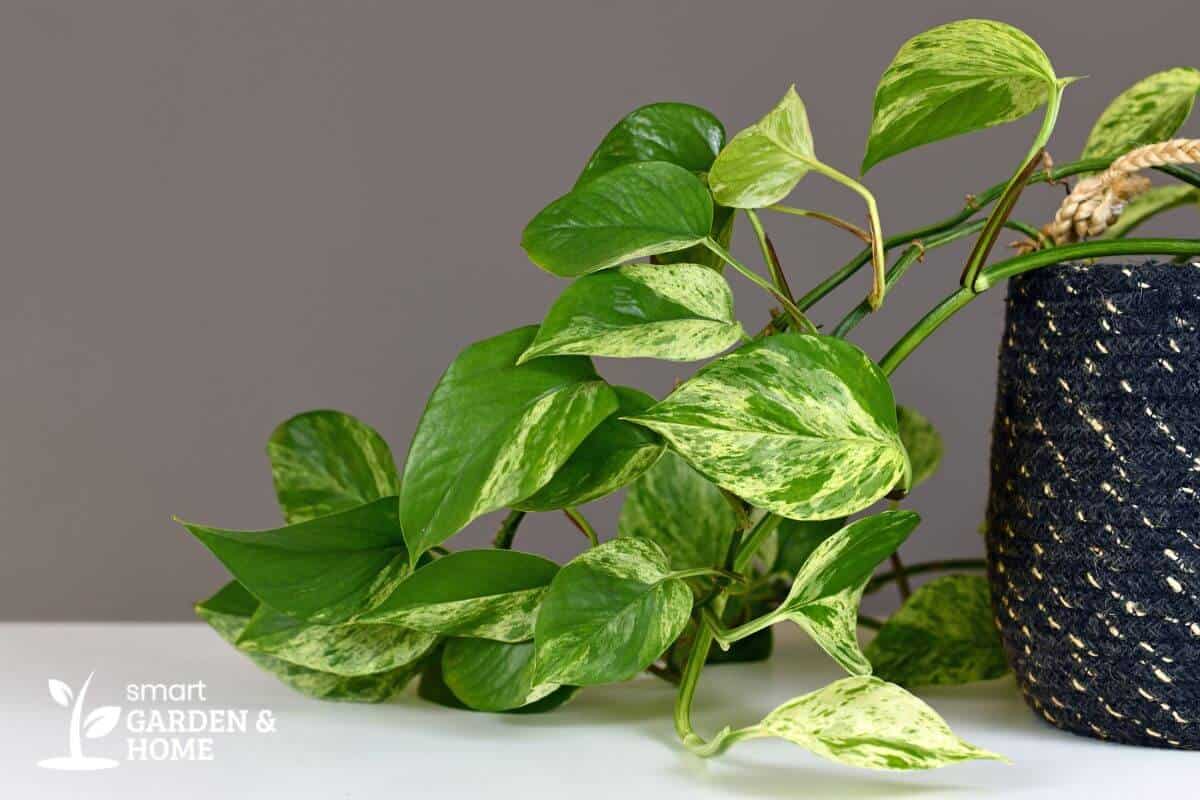
The Pothos plant, otherwise known as the Devil’s Ivy, is a trailing plant with heart-shaped leaves.
This plant is literally indestructible and will remain green in the lowest light conditions, making it the perfect indoor house plant for dark homes.
The glossy, heart-shaped leaves of the Pothos plant shine in the sunlight.
Although it’s able to withstand poor lighting conditions, this plant prefers bright spaces with indirect light.
The Pothos is a popular houseplant due to their ability to filter the air from contaminants and improve the quality of air in your home.
Learn more in this overview care of pothos plants.
3. Anthurium (Anthurium)
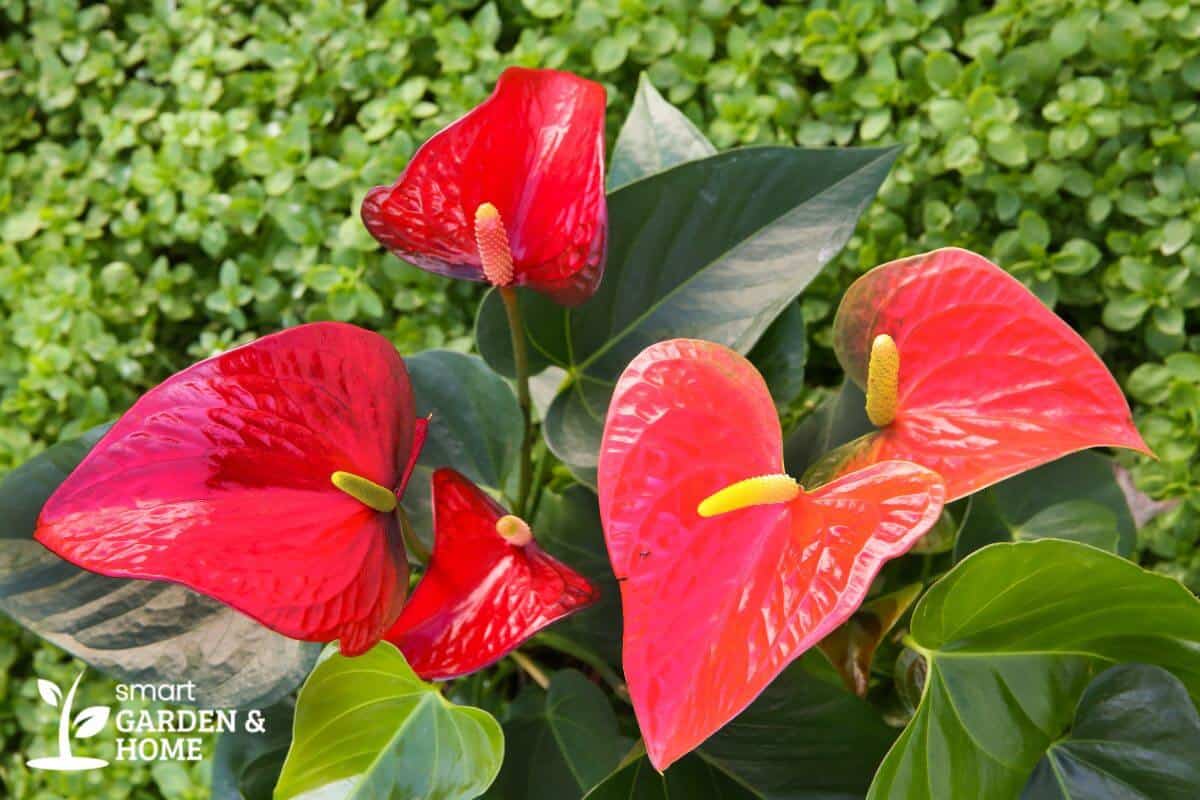
The Anthurium plant is distinguished by its pointy, dark green, heart-shaped leaves.
One notable feature of the plant is its delicate blooms that are red wax-coated, which are occasionally misidentified as artificial flowers.
This plant is recognized for its rapid growth and ease of care, making the Anthurium a great choice for indoor gardens.
The Anthurium plant is capable of enduring varying levels of indirect light conditions, but a growing environment with less light will result in lower flower production and slower growth.
This plant’s leaves are susceptible to being scorched if it’s exposed to direct sunlight.
Large amounts of ambient sunlight and warmer indoor temperatures will bring out the stunning colors of this plant’s flowers and dark green heart-shaped leaves.
The Anthurium plant’s heart-shaped leaves will indicate when they require water as they will usually begin to droop and seem lifeless. Yellow leaves are a clear indication that the plant has been overwatered.
Avoid consistent watering this eloquent plant by first checking the soil: if the soil on the surface has dried, the plant will need to be watered.
4. Arrowhead Plant (Syngonium)
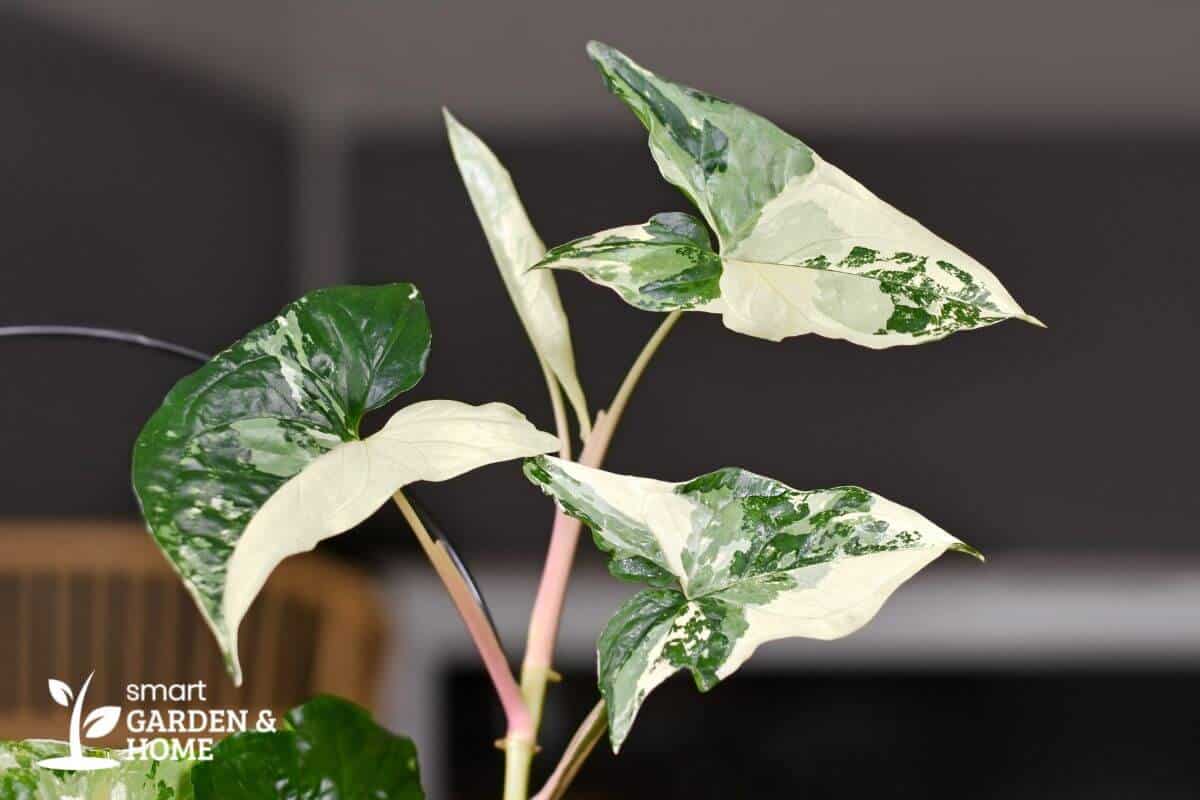
Cupid’s Arrowheads are often mistaken for hearts, the same can be said with the Arrowhead plant leaves. The distinct green, arrow-shaped leaves portray pointy-shaped hearts.
This plant is a vining plant that, if left unattended, will spread its vines throughout your garden.
Dark corners of your household will do just fine for this plant as the Arrowhead plant is able to adjust to the lowest light conditions.
However, the plant will lose its vibrant colors unless it’s exposed to 6 hours of ambient sunlight throughout the day.
Almost all indoor plants need their soil to dry out before being rehydrated. However, if left to dry out for extended periods, the plants’ heart-shaped leaves will turn brown and perish.
On the other hand, try to avoid excessive watering of this plant as it’s susceptible to root rot.
Learn more about the Arrowhead Plant at Home.
5. Swiss Cheese Plant (Monstera Deliciosa)
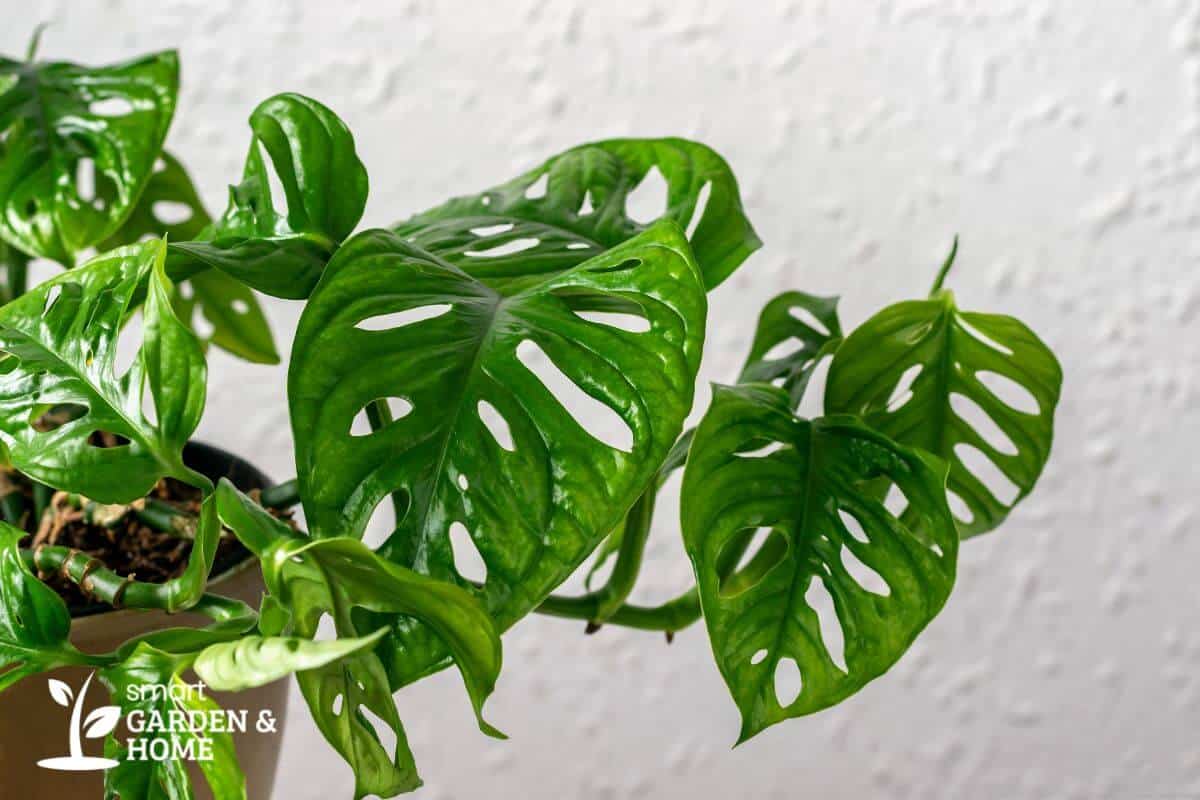
If you’re looking to make a statement, the rather large, green, heart-shaped leaves of the Swiss Cheese will get the conversation started.
This plant is native to the forests of Central America and is often referred to as the split-leaf philodendron because of its split leaves.
This plant naturally grows under the canopies of trees in tropical forests as it loves shaded areas with ambient sunlight.
This plant can withstand morning sunlight but requires protection from the intense afternoon sun.
For optimal growth, this plant requires soil with good drainage and will require more watering during the spring-to-fall growing period.
The Swiss Cheese plant grows well in areas with higher levels of humid conditions. You can always increase the levels of humidity by spraying mist onto the plant.
6. String of Hearts (Ceropegia Woodii)
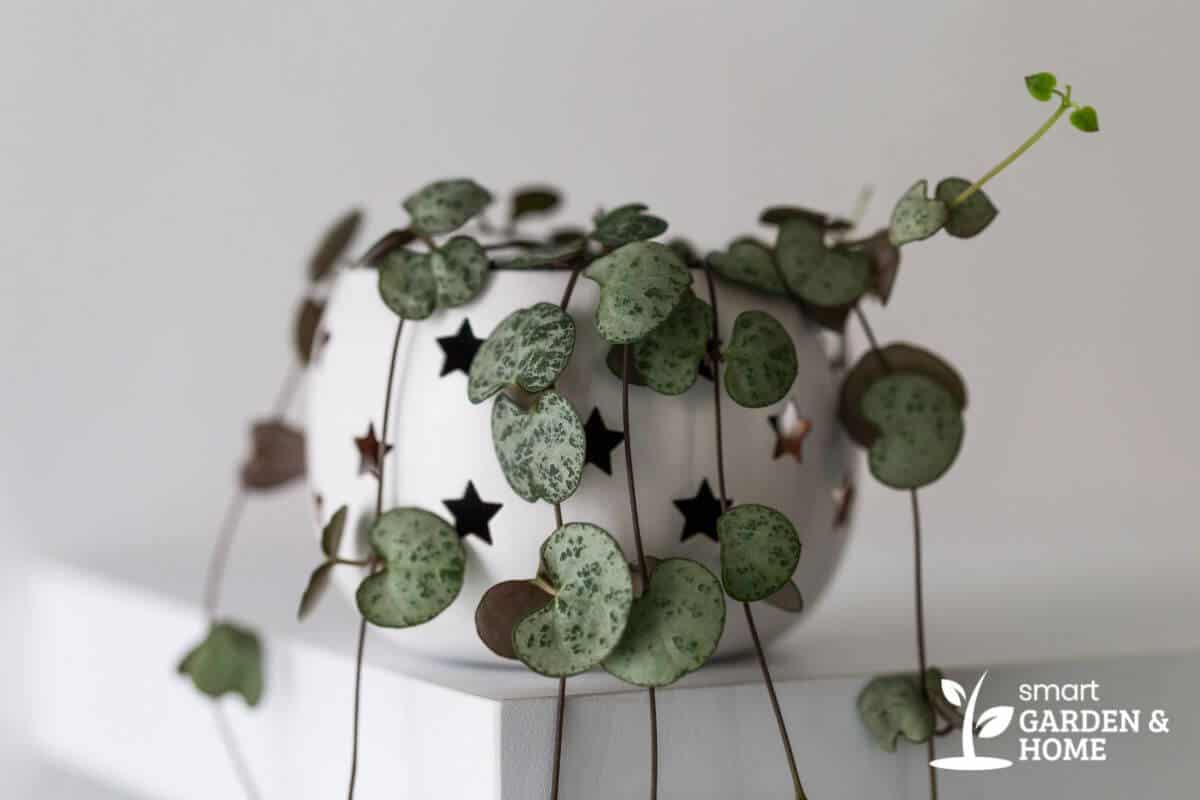
This trailing succulent plant just keeps giving hearts—the String of Hearts plant has heart-shaped leaves with blotches of silver markings.
This succulent can grow up to 3 inches tall and has purple-colored vining stems that stretch over 9 feet tall.
The creeping and dainty-looking vines of this succulent are best portrayed from heights with a hanging feature, where its dark green and silver-vining leaves overflow from the feature.
If you decide to grow this plant as an indoor plant, it must be placed near a window that provides brighter light.
Since the String of Hearts is a succulent, this plant doesn’t need to be overwatered.
The roots of the plant can easily contract Root Rot if left standing in water and the leaves of your plant will begin to lose their color if the plant is overwatered.
7. Hoya Hearts (Hoya Kerii)
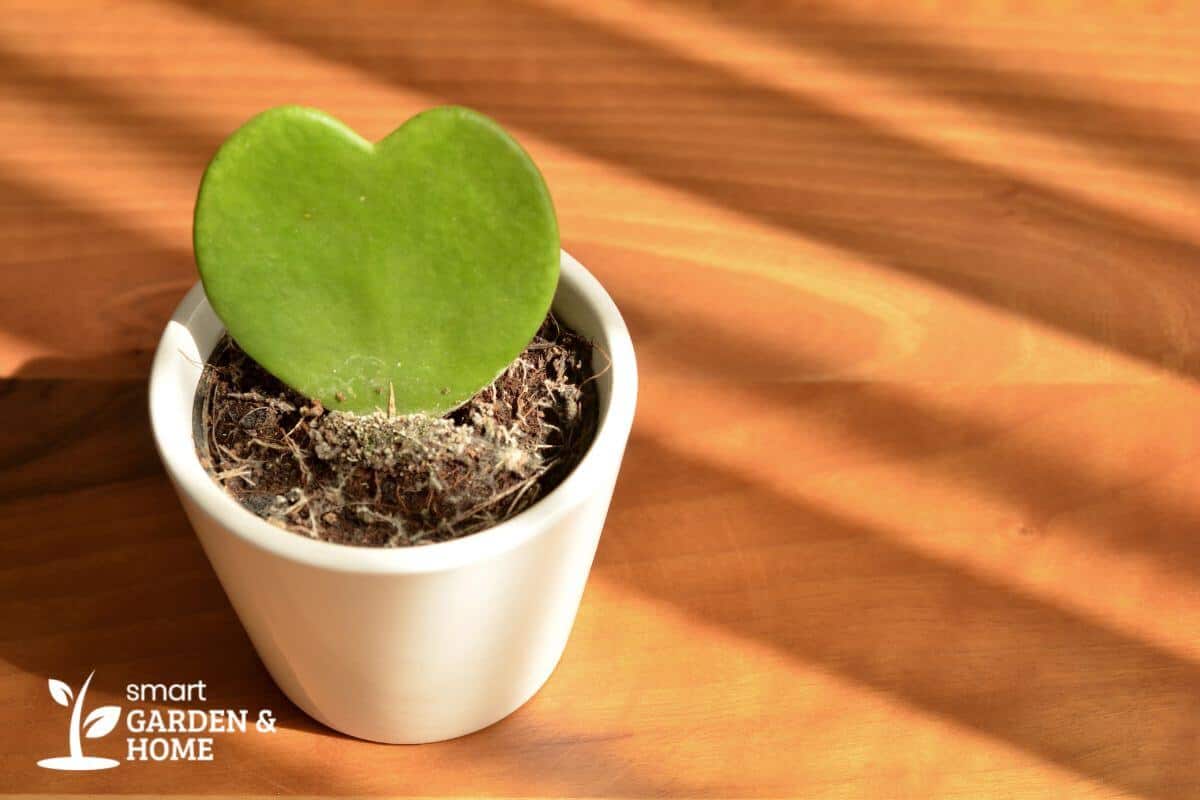
The Hoya plant is known for its thick, heart-shaped leaves, and it has earned it some popular nicknames such as the Valentine’s Hoya or the Sweetheart Plant.
This succulent, needless to say, is a popular choice for common gifts during Valentine’s Day for plant lovers and plant collectors as an alternative to flowers or bouquets of flowers.
As succulents, these plants have a natural adaptation to thrive in arid environments. For optimal growth, this plant requires ample sunlight, dry and sandy soil, and minimal watering.
The 4-inch Hoya Kerii plant succulent basically thrives on being neglected, however, it’s an incredibly slow-growing plant.
If you are planning on growing this plant indoors, it should be placed on a sunny windowsill and should be watered every few weeks.
Succulent leaves are sensitive to the cold, so make sure the plant isn’t exposed to freezing climates.
8. Creeper Plant (Philodendron Gloriosum)
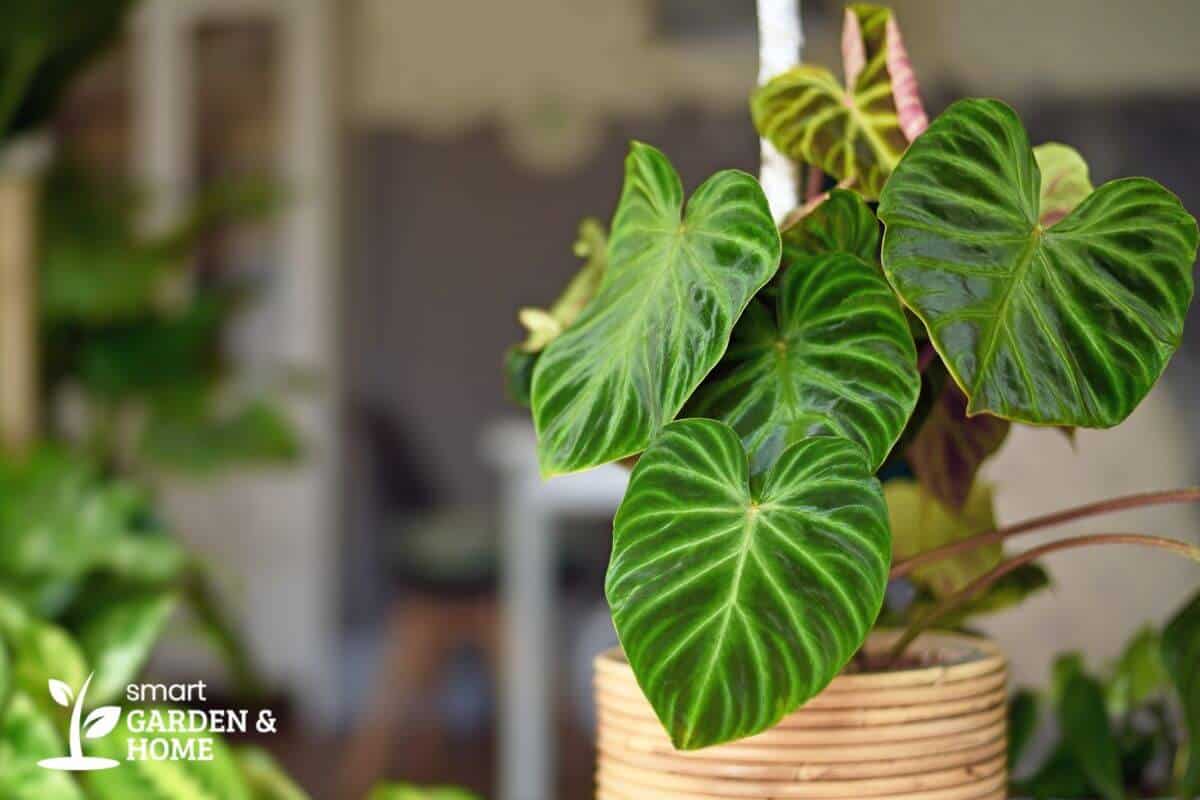
The Philodendron species of plants are common house plants. Their heart-shaped leaves make them a particularly sought-after species amongst indoor growers.
These plants are tropical and relatively easy to grow, and adding several to your interior decor will turn your household into a living jungle.
The Philodendron Gloriosum is a creeping plant that loves to search for new areas to extend its velvety leaves.
Overwatering and foliage discoloration are particular problems when it comes to this plant.
This plant grows best in areas with bright, indirect light.
If these plants are grown in an indoor space, try to place them near a window that is facing east or westwards as it can tolerate morning or filtered afternoon sunlight.
The leaves of the Philodendron plant can be scorched by being exposed to excessive amounts of direct light.
However, poor lighting conditions will lead to slow growth, and the leaves of the plant will become leggy.
9. Philodendron Fuzzy Petiole (Philodendron Nangaritense)
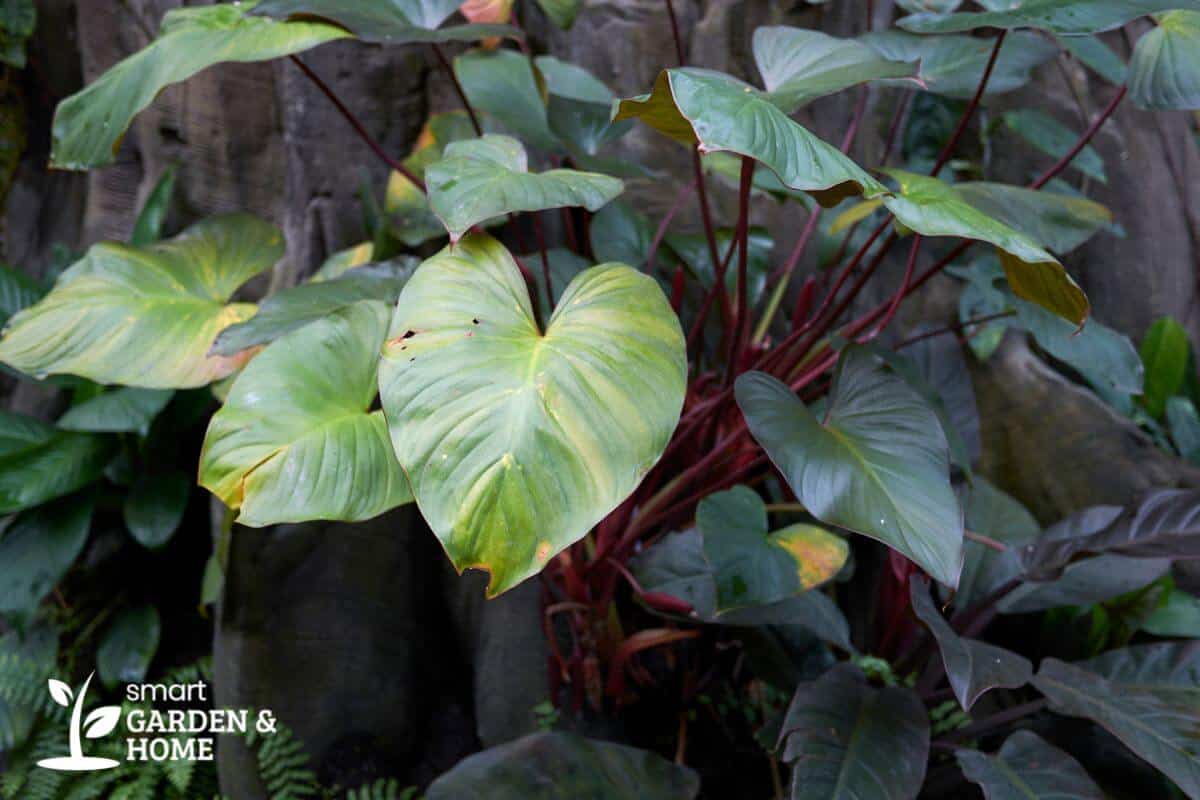
The Philodendron Fuzzy Petiole is a perennial evergreen plant that has large, dark green, heart-shaped leaves that can reach over 60cm. This plant has the tendency to climb up structures and grows rapidly.
To incorporate sizable, heart-shaped leaves into your garden, it is recommended to plant the Philodendron Fuzzy Petiole in areas with shade.
To thrive as a houseplant, this particular plant requires placement in a well-lit room with ample indirect sunlight.
Philodendrons are not the thirstiest of plants. However, when the surface layer of soil begins to dry out, that’s generally a good time to rehydrate your plants.
This plant may have attractive heart-shaped leaves, but it’s toxic for human and pet consumption.
10. Heart Fern (Hemionitis Arifolia)
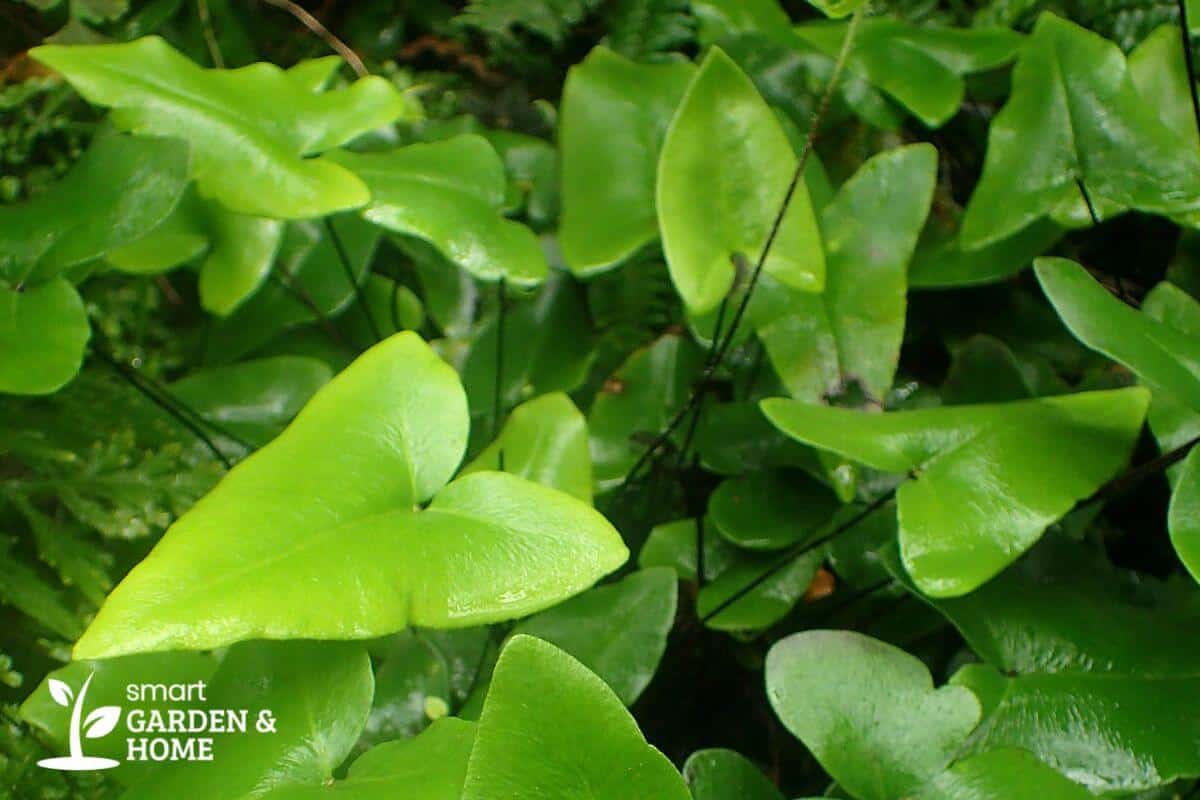
The name of this plant says it all—the Heart Fern is popular amongst indoor growers for its perfect heart-shaped leaves. Its leaves are a glossy, deep green color that extends off short stems.
It’s not the biggest of plants and is considered to have dwarf-like features.
The Heart Fern loves water and can grow in containers with or without drainage, and it can even be planted in a terrarium.
This fern will generally grow in medium to bright light conditions.
If the plant is grown indoors, it can be placed near a window that is facing east or westwards, and don’t expose the plant to direct sunlight.
Heart Ferns are ideally placed in terrariums because they love moisture. It’s important to keep the soil moist as Heart Fern’s roots will easily dry from a lack of moisture.
The Heart Fern is one of the best heart-shaped plants to show your love.
Best Plants With Heart-Shaped Leaves Final Thoughts
If you’re looking for incredible plants with heart-shaped leaves to show your love, consider the Hoya Heart succulent, Philodendron Gloriosum, Philodendron Fuzzy Petiole, and Heart Fern.
It is important to research the required levels of sunlight and care for each individual aesthetic houseplant in order for them to thrive in their environment.
Proper care and attention can ensure that these plants thrive and add vitality to your home or garden, while also serving as a sentimental reminder!
Check out these interesting articles to know more information about plants with heart-shaped leaves:

